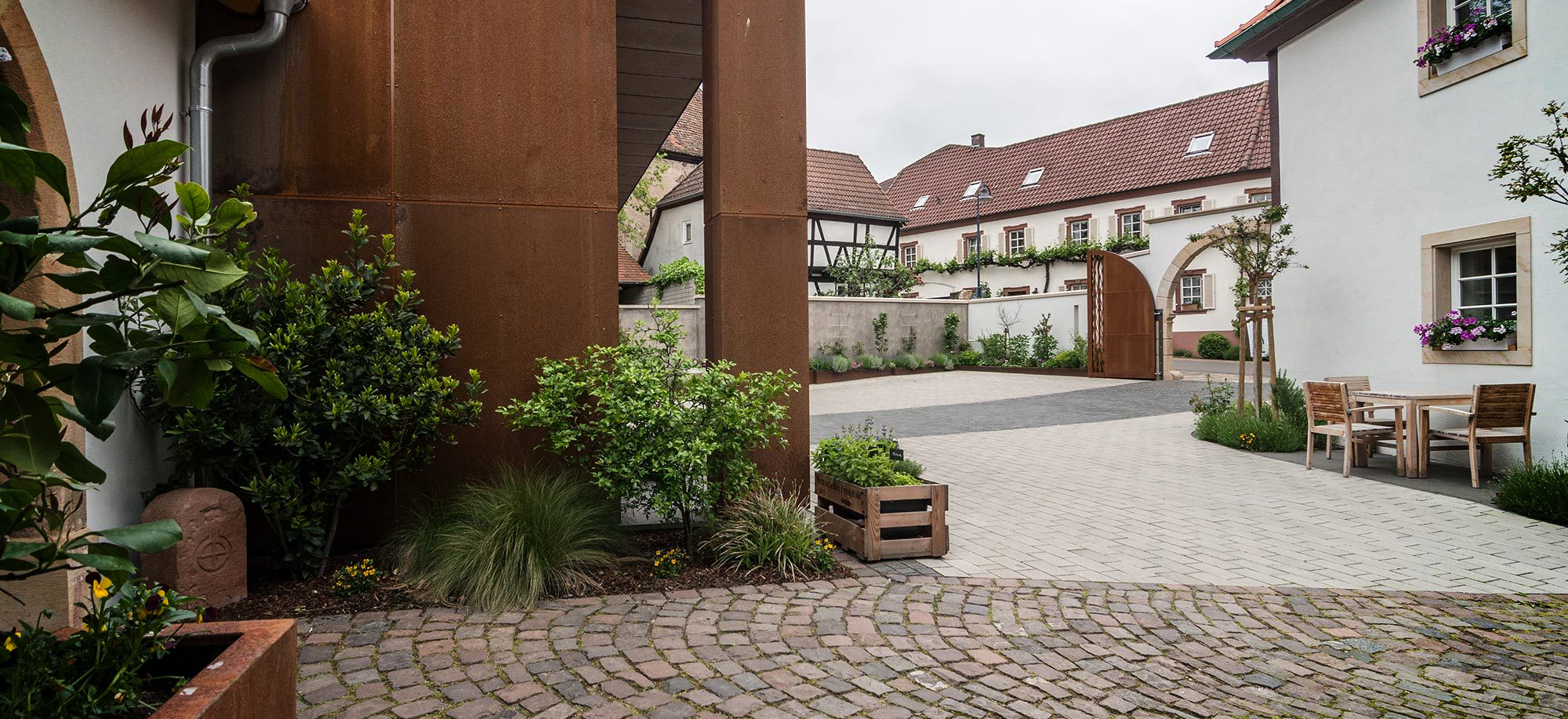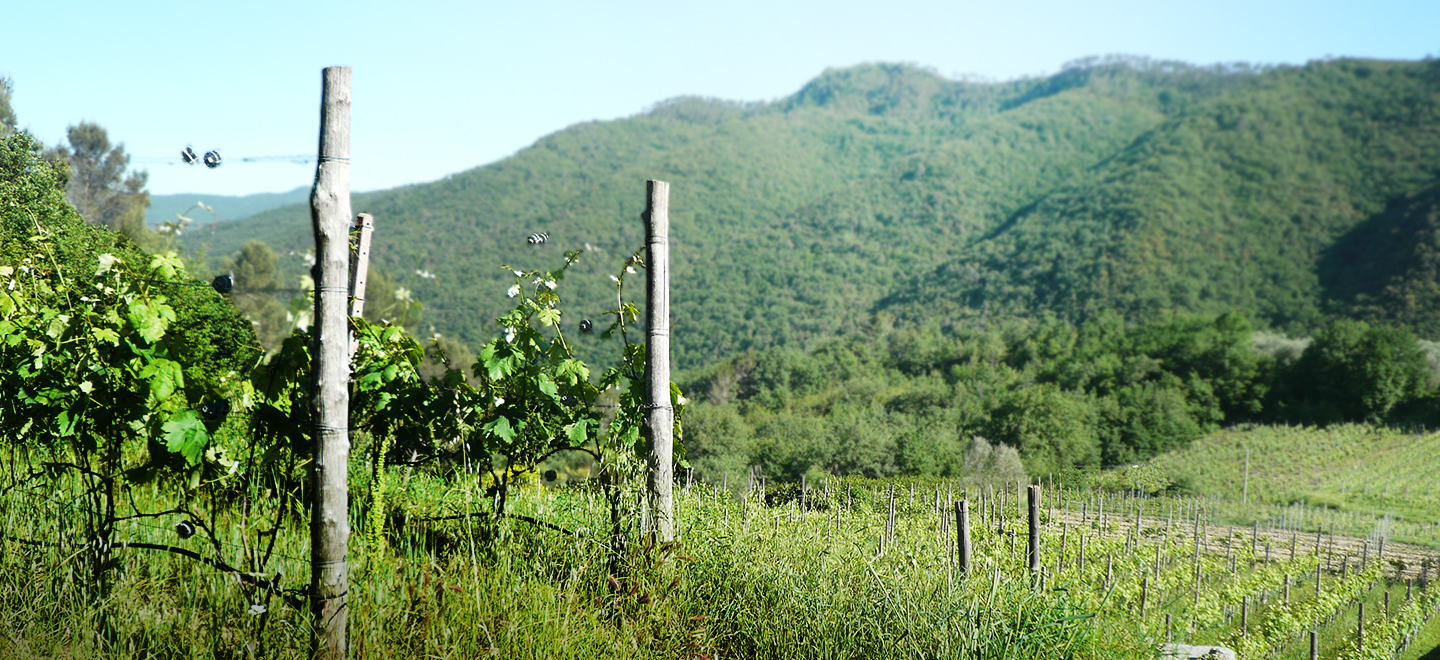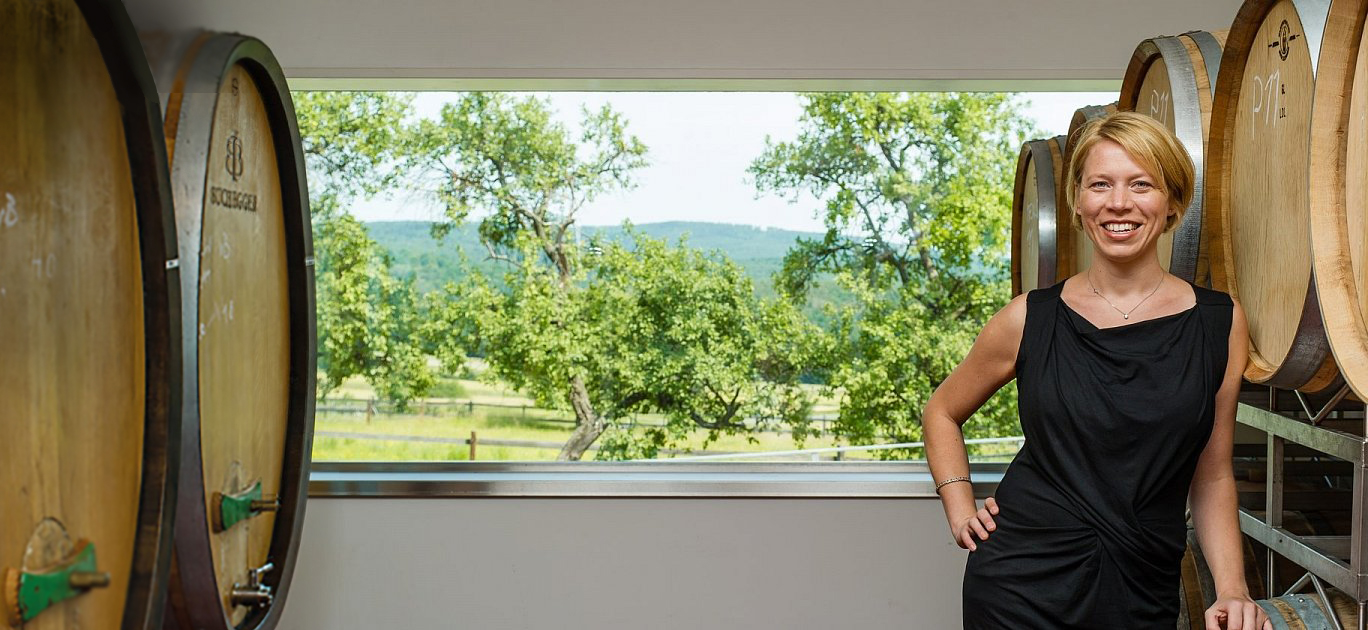Producers
-
Description:
Kim Engle and Debra Bermingham of Bloomer Creek began purchasing land and planting grapes in the early 1980's, eventually establishing their estate Bloomer Creek Vineyard in 1999 from 10 acres with two different vineyard designations - Auten Vineyard and Morehouse Road - planted on the west side of Cayuga Lake. In 2012, Barrow Vineyard was added to Bloomer Creek when Kim and Debra purchased an abandoned vineyard site on the east side of Seneca Lake, one mile from their production cellar in Hector, NY.
The 'Bloomers' meticulously farm their sites using organic methods - employing no herbicides or irrigation in the vineyard. The fruit is hand-harvested, and only native yeasts are used for fermentation, often utilizing whole clusters, extended lees aging, and allowing fermentations to progress at their own rate without using temperature control.
Bloomer Creek has always carved their own path and the results are wonderful. Their wines are incredibly distinctive, age-worthy and expressive of the place and time in which they were produced. That place is the Finger Lakes, and Bloomer Creek may be the single most unique, and compelling voice in town.
Image: Region:
Region: -
Description:
Bodegas Moraza is in San Vicente de la Sonsierra, one of the first villages in Rioja Alta to be known exclusively for the high quality of the wines made within its medieval settings. The village name means literally under the mountains, and indeed everywhere you look the towering mountains of Tolono - a part of the Sierra Cantabria - dominate the horizon. The small town stands left of the Ebro, the river that crosses the vast Rioja region, and it is here, surrounded by vineyards, that the Moraza family built its winery six generations ago. The family has been growing grapes and making wines since their beginning, and today it is run by the charismatic winemaker Janire Moraza.
Janire started getting involved in the late 2000s and her first vintage was 2013. With the help of her husband, Patricio Brongo, she formalized many of the ideas and practices that the family already applied to their farming - working without herbicides and chemicals, following a lunar cycle for pruning and racking - and started the process of biodynamic certification (the vineyards had been certified organic since 2006.) She tells us that when she started talking about biodynamics to her father, he told her that they were already using many of the principles. She improved on those and started making the 500 and 501 preparations to treat the vineyards, and a lot of work became focused on soils.
Today all of their 23 hectares have organic and biodynamic certifications. The majority of the parcels is found in San Vicente de la Sonsierra, but a couple are closer to Abalos, and Pecina, a little further along and north from the river. There is also one plot in La Bastid.
In the cellar the work is minimal, and slightly atypical for Rioja in that none of the wines are made or staged in oak. As they make clear "our winery was completely built in concrete in 1983 according to the wine-making principles that prevailed in our ancestral house. It has been designed to work with gravity over three floors, so we can avoid over pumping and unnecessary manipulation. Loyal towards our philosophy of letting the fruit fully express itself, fermentation takes place spontaneously in concrete tanks with indigenous yeasts."
The focus on purity of fruit is evident on all wines, which are bright and fresh on the palate, and enhance the character of each varietal. They work mostly with Viura for their whites and skin contact wine, but also make a Tempranillo Blanco and cultivate and use other native whites such as Calagrano. The reds are made of Tempranillo and are sometimes blended with Garnacha, and Graciano, which also shine singularly with a couple of monovarietal bottlings.
Janire and her work is an excellent addition to our portfolio, and Bodegas Moraza is proof of the wide-range of wines and diverse character of Rioja, which we continue to explore and support at Bowler.Image: Region:
Region: -
Description:
The timbered home that houses this family-owned estate in Hainfeld was built in 1619, but the estate in its current form is far more recent than that. In 1990 Annette Borell and Thomas Diehl married and created Borell-Diehl by joining their families' three wineries into one. Starting with a total of 5 hectares, they have since expanded to 35 hectares of vineyards, all within 5km of Hainfeld, about 1/2 hour drive from Deidesheim. Their holdings are a complex geology of loess, limestone, red sandstone, with deposits of minerally muschelkalk (limestone) in some sites.
Annette and Thomas' oldest son George has taken over leadership at the estate. Having staged at important addresses like Rebholz (Pfalz) Wittmann (Rheinhessen), and Von Volxem (Saar), as well as an internship in New Zealand in 2016, he continues the winery's focus on quality wines of extraordinary value. All the wines David Bowler imports are from estate-owned vineyards where rigorous crop thinning and hand-harvesting are the norm. In addition, no systemic pesticides or herbicides are used and there is no irrigation in the vineyards. As of 2018, the wines are certified vegan by the European Vegetarian Union.
Borell-Diehl is our cool, under-the-radar source for a slew of great wines "beyond Riesling," including:
- fun, splashy liters of Müller-Thurgau and St. Laurent Rosé (our top-selling German wines!!!)
- fabulous Gewürztraminer in a fruity Kabinett style
- an excellent methode champenoise Chardonnay Sekt
- a classic Spätburgunder of such quality and value it would beat or compete with any American or French Pinot Noir under $20 that you'd care to name---a must try!
Image: Region:
Region: -
Description:
For more information on Domaine les Bottes Rouges, please visit Selection Massale.
Available in California.
Image: Region:
Region: -
Description:
For more information on Brasserie de Pigeonelle, please visit Selection Massale.
Available in California.
Image: Region:
Region: -
Description:
New Jersey and Pennsylvania Only
Established in 2004 by owner and winemaker Chris Brockway, Broc Cellars is a Berkeley-based natural winery that makes refreshing and approachable wines for everyday drinking.
Chris Brockway’s winemaking journey began with California Zinfandel. The spicy, brambly fruit style drew him from his hometown of Omaha, Nebraska all the way to California. What he found, however, was that California wines had changed to fit the “bigger is better" mold of the time. Personally, he felt it was all too much – high alcohol, too big, too much everything.
Chris believed California wine could be different. From a single barrel in 2002 to now over 20 different wine releases a year, Broc Cellars makes fresh California wines to enjoy and for your table. In 2023, Broc Cellars extended their vision of simple and ethical winemaking into the vineyard as new owners of Fox Hill Vineyard, an organically farmed 60-acre site planted to Italian varieties in Mendocino County.
We are thrilled to welcome Broc Cellars into the Bowler portfolio in New Jersey and Pennsylvania!
Image: Region:
Region: -
Description:
It's rare to find anyone in Chablis who farms biodynamically and it immediately drew my attention when the introduction to the Brocard wines crossed my desk. Even today, in 2023, there are only a handful of producers in Chablis practicing biodynamic viticulture. When Julien joined his father as vineyard manager in 1997 at Jean-Marc Brocard, the winery was using everything in the arsenal to combat disease: herbicides, fungicides, pesticides. Julien was determined that there had to be a better way. He had heard about biodynamic farming and became a part of a group of growers in Burgundy (which included Aubert de Villaine, Anne-Claude Leflaive and Dominique Lafon) who shared their trials and tribulations of farming this way. In 1997, he started his exploration with the village level “Boissoneuse” vineyard, which is the heart of the Julien Brocard winery.
Julien Brocard was the first to practice biodynamic farming in Chablis and it was not without its challenges. Growers from neighboring plots feared that biodynamic farming brought disease to their vineyards. Ignoring the naysayers and happy with the results, Julien pressed on and continued to convert more vineyards to biodynamic agriculture. In 2012, feeling that the sites were showing their fullest potential, he launched his own label, Julien Brocard - les 7 Lieux. “7 Lieux” translates to seven sites and he started with seven wines that year.
Today, Julien is working with 18 hectares total, the heart of which is 11 hectares in the Boissoneuse vineyard in Préhy. Biodynamic farming requires constant human observation and attention, and the use of ancestral methods and tools, such as horse-drawn plowing which creates a natural link between people, the soil and the plants. Since planting fruit trees in the vineyard he has witnessed a resurgence of wildlife and microbial life in the soil. He’s working on the reforestation of his vineyards as well to help balance the water in the soil.Image: Region:
Region: -
Description:
Brooklyn Cider House is owned and operated by Peter and Susan Yi. The story began in 2014 when Peter, previously the owner of PJs Wine and Spirits in New York City, got a taste of the traditional ciders from the Basque region during a wine trip to Spain. Up until that point, Peter had been a passionate wine lover with little interest in cider but he returned from the trip a changed man. He convinced his sister, Susan to quit her job as a teacher and within a year they had purchased a 200-acre apple orchard in New Paltz, NY. And so began their journey into cider production with the first releases in the fall of 2015.
Their sustainably farmed orchard has 110 acres of trees planted to 40 different heirloom varieties such as Kingston Black and Tremlett’s Bitter. Since a number of the trees are still quite young and not yet producing, Peter and Susan have been purchasing some fruit from nearby apple growers and cider producers.
The process for making the ciders is simple: The apples are harvested, pressed upstate and then brought down to the cidery in Bushwick for "ciderfication". The juice is fermented in stainless steel where it also undergoes malolactic for 6-9 months. It is then transferred to 80-year-old chestnut barrels (imported from Spain) and aged on the lees for about a year. Nothing is added during the process except for a little bit of SO2 at bottling.Image: Region:
Region: -
Description:
Established in 1970 by the late Riccardo Bruna, Azienda Agricola Bruna is the benchmark producer of the local Pigato (AKA Vermentino*) grape, a late-ripening variety named for the amber spots that appear on the bunches. Located in the Arroscia valley in western Liguria, the historic home for Pigato, Bruna is a tiny 7.5 hectare estate consisting of 5-6 vineyard plots, all planted on terraced vineyards carved out of the mountainside. Production in a top year is only 3000 cases. The vineyards are perched at 200-300 meters above sea level and only 15km from the Mediterranean. This area, known as the Maritime Alps, is known for its production of olives, cherries and aromatic herbs, such as rosemary, thyme and sage. Bruna is run by Riccardo’s daughter Francesca and her husband, Roberto. The estate has worked organically (not certified) since 2009. In addition to its three Pigato wines, Bruna makes a Vermentino, a Rossese, and a two red blends based on the local Granaccia variety, a variant of Grenache.
*“Vermentino is actually Pigato. Wait a minute; no, Pigato is not Vermentino. After years debating the issue, researchers, wine experts and producers in Italy all agree to disagree on the subject. The academicians all apparently believe that Pigato and Vermentino are the same; many of Liguria’s wine producers do not. Being facetious, you might say that’s because the grapes are both Favorita. No, wait: they’re all Piccabon (a wrong attribution: we now know Piccabon is identical to Vernaccia di San Gimignano). And so the story goes on. And on. According to recent genetic testing, however, Piedmont’s Favorita and western Liguria’s Pigato appear to be biotypes of Vermentino, rather than distinct varieties… For the best Pigatos, try: Bruna*** (especially U Baccan, balsamic and rich).” – Ian d’Agata – Native Wine Grapes of Italy
Image: Region:
Region: -
Description:
Weingut Buchegger was established in 1893. Walter Buchegger—who sadly passed away in 2018— took over from his father in 1994, making him the sixth generation to run the family estate. He and his wife Silke Mayr had originally kept their wineries independent from one another until 2006, when they started to share a winery space. They worked together to run both wineries; now Mayr manages both. The estate has fifteen hectares of vines located in the Kremstal on mostly conglomerate soil topped with loess, planted to Grüner Veltliner and Riesling, with a smattering of Zweigelt, Chardonnay and Merlot. The loess has a high chalk content at sixty-five percent. The top sites in the estate’s holdings are the Gebling, Holzgasse, Pfarrweingarten, Moosburgerin, and Tiefenthal.
The vineyards are farmed following the Austrian “Kontrolled Integrated Production” or KIP, which is stricter in some ways that the normal organic designation: for example, it places more stringent limits on the amount of copper sulphate allowed and limits the use of tractors which can compact the soil. Allowing the soil to “breathe” leads to healthier root systems and vines. No herbicides or insecticides have been used in the vineyards for twenty-five years.
The Bucheggers are proud that their vines have been around since before scientists were working on clonal breeding and proud also that their vines are all massale selection, and have been from the time the winery was established. The house style is very classic: the wines have ripeness and power, but always without botrytis. Walter’s number one goal was to make wines that are irresistably delicious and his team continues to make wines with his vision in mind.
Image: Region:
Region:
